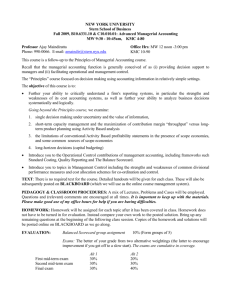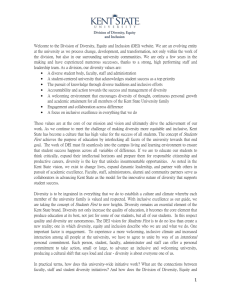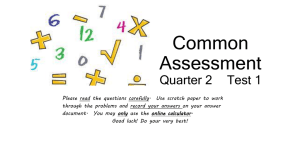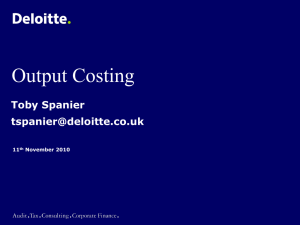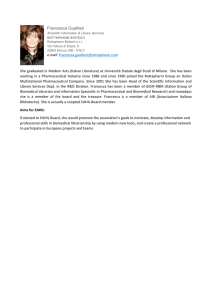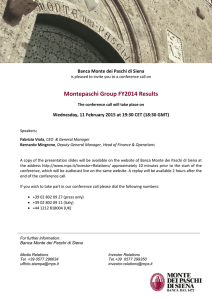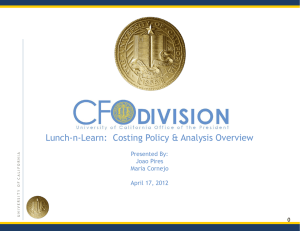Mandanici analisi gestione dei costi
advertisement
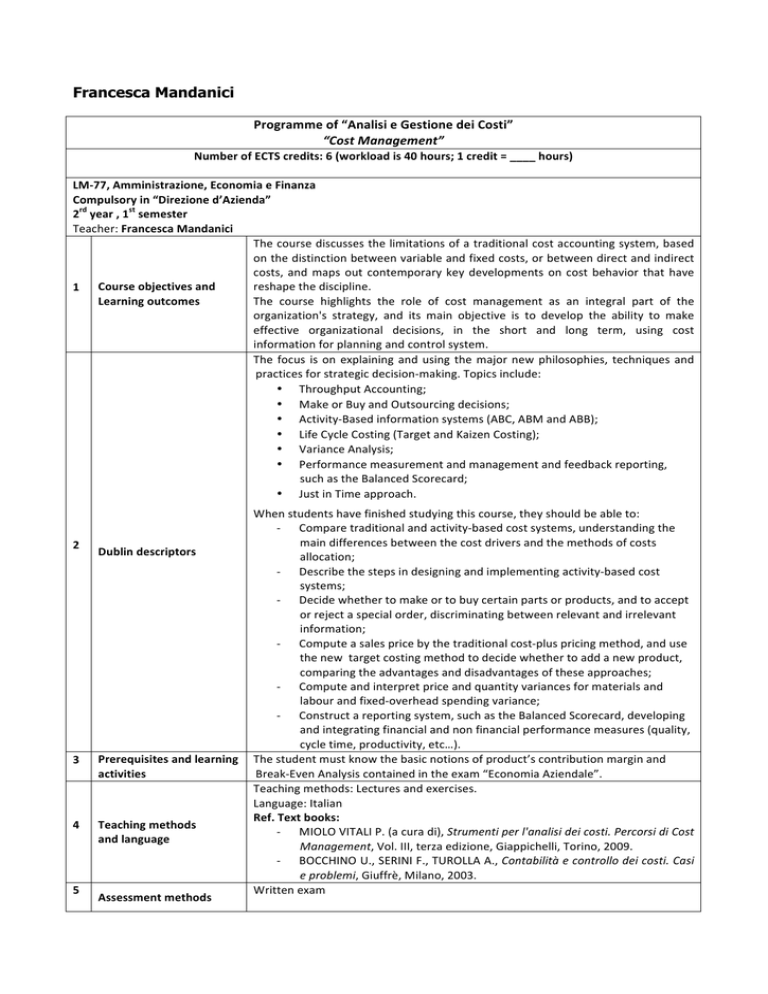
Francesca Mandanici Programme of “Analisi e Gestione dei Costi” “Cost Management” Number of ECTS credits: 6 (workload is 40 hours; 1 credit = ____ hours) LM-­‐77, Amministrazione, Economia e Finanza Compulsory in “Direzione d’Azienda” rd st 2 year , 1 semester Teacher: Francesca Mandanici The course discusses the limitations of a traditional cost accounting system, based on the distinction between variable and fixed costs, or between direct and indirect costs, and maps out contemporary key developments on cost behavior that have reshape the discipline. 1 Course objectives and Learning outcomes The course highlights the role of cost management as an integral part of the organization's strategy, and its main objective is to develop the ability to make effective organizational decisions, in the short and long term, using cost information for planning and control system. The focus is on explaining and using the major new philosophies, techniques and practices for strategic decision-­‐making. Topics include: • Throughput Accounting; • Make or Buy and Outsourcing decisions; • Activity-­‐Based information systems (ABC, ABM and ABB); • Life Cycle Costing (Target and Kaizen Costing); • Variance Analysis; • Performance measurement and management and feedback reporting, such as the Balanced Scorecard; • Just in Time approach. 2 3 4 5 When students have finished studying this course, they should be able to: -­‐ Compare traditional and activity-­‐based cost systems, understanding the main differences between the cost drivers and the methods of costs Dublin descriptors allocation; -­‐ Describe the steps in designing and implementing activity-­‐based cost systems; -­‐ Decide whether to make or to buy certain parts or products, and to accept or reject a special order, discriminating between relevant and irrelevant information; -­‐ Compute a sales price by the traditional cost-­‐plus pricing method, and use the new target costing method to decide whether to add a new product, comparing the advantages and disadvantages of these approaches; -­‐ Compute and interpret price and quantity variances for materials and labour and fixed-­‐overhead spending variance; -­‐ Construct a reporting system, such as the Balanced Scorecard, developing and integrating financial and non financial performance measures (quality, cycle time, productivity, etc…). Prerequisites and learning The student must know the basic notions of product’s contribution margin and activities Break-­‐Even Analysis contained in the exam “Economia Aziendale”. Teaching methods: Lectures and exercises. Language: Italian Ref. Text books: Teaching methods -­‐ MIOLO VITALI P. (a cura di), Strumenti per l'analisi dei costi. Percorsi di Cost and language Management, Vol. III, terza edizione, Giappichelli, Torino, 2009. -­‐ BOCCHINO U., SERINI F., TUROLLA A., Contabilità e controllo dei costi. Casi e problemi, Giuffrè, Milano, 2003. Written exam Assessment methods
